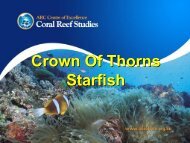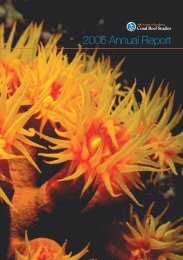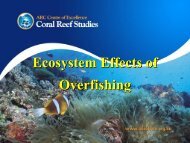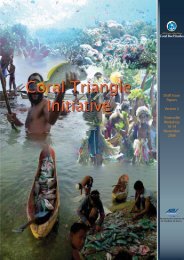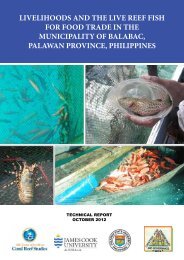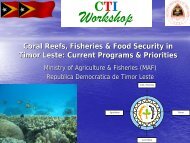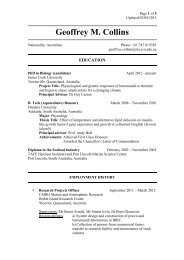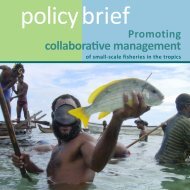Proceedings of the 18th Working Meeting of the Crocodile Specialist ...
Proceedings of the 18th Working Meeting of the Crocodile Specialist ...
Proceedings of the 18th Working Meeting of the Crocodile Specialist ...
Create successful ePaper yourself
Turn your PDF publications into a flip-book with our unique Google optimized e-Paper software.
The proposal places an emphasis on <strong>the</strong> need for status congruence with <strong>the</strong> IUCN<br />
Red List and <strong>the</strong> Mexican NOM-059-SEMARNAT-2001, which rank it as <strong>of</strong> Lower<br />
Risk conservation dependent (LRcd), and Under Special Protection (Pr), respectively.<br />
A tri-national workshop held in Mexico fostered <strong>the</strong> development <strong>of</strong> a regional<br />
strategy to ensure cooperation for <strong>the</strong> conservation <strong>of</strong> <strong>the</strong> species in <strong>the</strong> long term,<br />
along its whole distribution range.<br />
1. Introduction<br />
After a field survey (2002-2004) developed by a group <strong>of</strong> Mexican experts (COPAN<br />
Project) a first national evaluation <strong>of</strong> wild populations status for Crocodylus moreletii<br />
in Mexico was developed. In December 2004, <strong>the</strong> COPAN report was reviewed<br />
during a specialized workshop convened by Mexico’s National Commission for <strong>the</strong><br />
Knowledge and Use <strong>of</strong> Biodiversity (CONABIO) to reassess <strong>the</strong> species status in <strong>the</strong><br />
IUCN Red List, NOM-059 (national red list) and <strong>the</strong> U.S. Endangered Species Act<br />
(ESA), including <strong>the</strong> newly collected data. The field survey ga<strong>the</strong>red information on<br />
<strong>the</strong> presence, abundance, and habitat for Crocodylus moreletii from 10 states,<br />
summing up information for 63 localities. The COPAN Project, for a current total <strong>of</strong><br />
145, recorded 40 new localities for <strong>the</strong> species in Mexico; <strong>the</strong> species was recorded in<br />
all <strong>of</strong> 21.9% <strong>of</strong> historic localities visited. Based on <strong>the</strong>se recent field data virtually<br />
covering all <strong>the</strong> species' range in Mexico, a general index <strong>of</strong> abundance (total<br />
individuals/total Km surveyed) was calculated for Mexico. Estimations for Guatemala<br />
and Belize’s wild populations sizes were carried out, based on published information,<br />
in order to produce a total estimation for <strong>the</strong> species throughout its range.<br />
Fur<strong>the</strong>rmore, a dynamic population simulation was carried out to evaluate its<br />
probability <strong>of</strong> extinction.<br />
2. Background<br />
Morelet’s crocodile (Crocodylus moreletii) lives in low-elevation water bodies<br />
(usually




